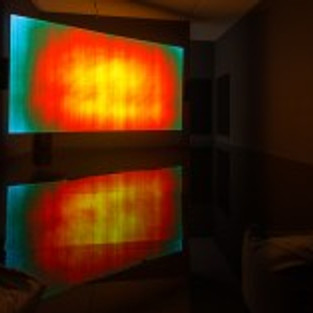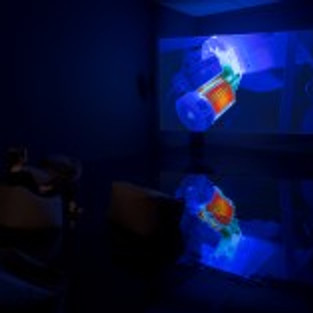Patrick Staff’s “Weed Killer” at MOCA
- artandcakela
- Apr 25, 2017
- 3 min read

Installation view of Patrick Staff: Weed Killer, March 12–July 3, 2017 at MOCA Grand Avenue, courtesy of The Museum of Contemporary Art, Los Angeles, Photo Credit Linda Kroff Photography
Patrick Staff’s Weed Killer at MOCA
by Linda Kroff
Patrick Staff’s arresting video installation, Weed Killer, at MOCA explores a set of deeply personal and highly complex issues around the body and what it means to be healthy or sick, normative or other, and ultimately self aware and self-possessed. These questions are powerfully posed in Staff’s immersive work as he visually magnifies his content through an intense and relentless use of close-up imagery and shots to keep the viewer focused and questioning while at the same time visually mesmerized.

Installation view of Patrick Staff: Weed Killer, March 12–July 3, 2017 at MOCA Grand Avenue, courtesy of The Museum of Contemporary Art, Los Angeles, photo by Zak Kelley.
The video opens with extremely close-up, high-definition thermal imagery of strands of hair fluttering in the wind and dissolving into flickering images that are akin to looking down a microscope at over-active cells and microbes. They are rendered in fully saturated blues, reds, yellows, and greens. We are inside the body and our own biology, as a haunting, but lyrically beautiful humming and screeching soundtrack starts, syncing up with the movement on the screen. The interiority of being lost in this microscopic world is broken by a narrative, adapted from Catherine Lord’s memoir, The Summer of Her Baldness, (2004) which is a raw and pointed account of the ravages one faces undergoing treatment for breast cancer and living with the disease. Transgender actress Debra Soshoux looks into the camera, filling the entire frame, all the while detailing the physical, psychological and social costs cancer has delivered. This relentless use of intimacy (one can only be this close with a loved one to experience this point of view) does not let the viewer escape their own feelings and fears around a host of core human questions. Lord challenging the viewer asks, “How come men own baldness…and how can a dyke lay claim to baldness out of her own home? So far, only my lover has seen my pate.” This is just one of several questions throughout the video that reminds the viewer of how fragile one’s agency, as one’s health, is in the world.

Installation view of Patrick Staff: Weed Killer, March 12–July 3, 2017 at MOCA Grand Avenue, courtesy of The Museum of Contemporary Art, Los Angeles, photo by Zak Kelley.
“To be in love… is everything. To be in love… is everything. Loving you is my heart’s desire. Loving you has set my soul on fire. Everyday you sweep me off my feet. I am falling more in love with you.”
These are the lyrics fervently lip-synched by transgender artist Jamie Crewe as a solo singer in a bar where the patrons are oblivious to the singer’s emotional belting out of the 1999 Master of Work’s, To be in Love. Crewe’s performance is full of pathos and rawness, which eloquently mirrors Catherine Lord’s words as both are expressing how oblivious one can be to the lives and struggles of others. This of course has reverberations on the macro level as rights, resources and support are being savagely taken away from those in the United States needing legal protection and justice the most. But, Patrick Staff’s two protagonists are completely self-defined examples of what it means to be brave and true to oneself regardless of one’s invisibility or the ignorance that surrounds them. Weed Killer, is hopeful and instructive because its incredible visual and auditory lyricism reminds us that the personal entwined with the poetic can be the most effective art and political statement of all.
#losangeles #art #losangelesart #mocagrand #contemporaryart #museumofcontemporaryart #southerncalifornia #artgallery #gallery #artopening #artexhibition #installation #fineart #artists #artist #video #soloshow #arts #environment #weedkiller #exhibition #videoinstallation #exhibit #patrickstaff #dtla #MOCA #mocala
































